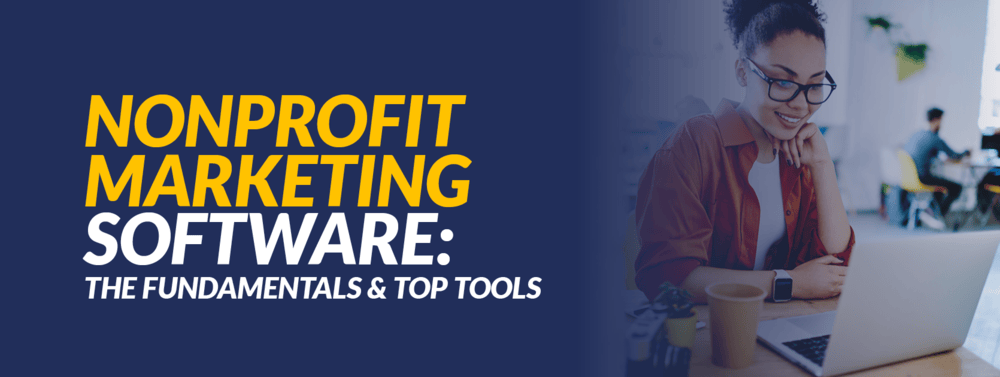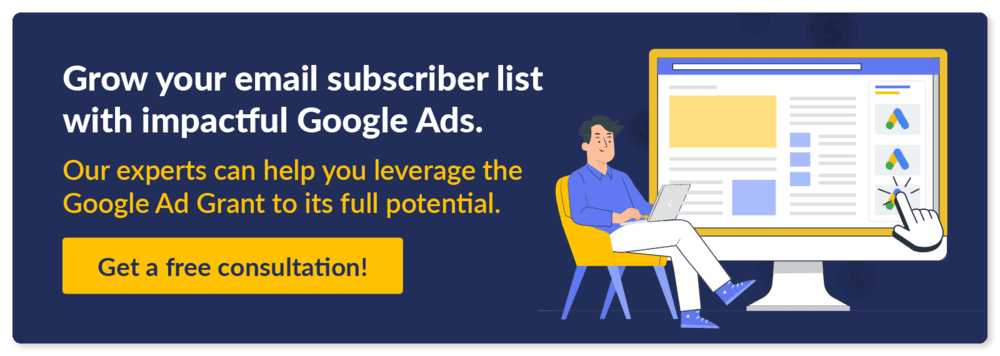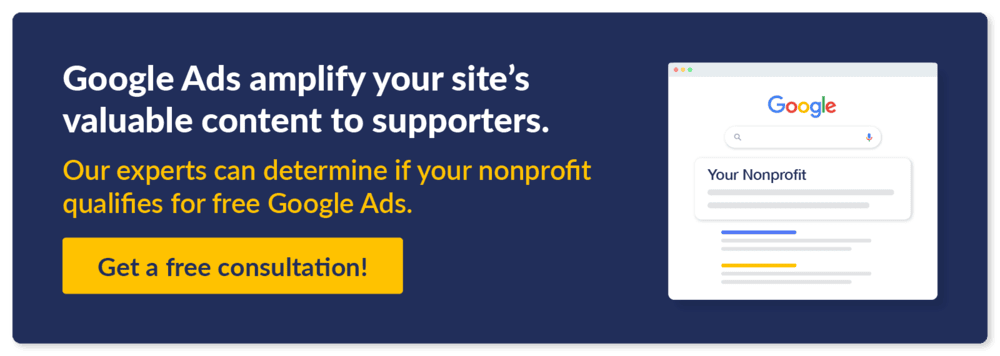Nonprofit Marketing Software: The Fundamentals & Top Tools
Running a nonprofit often feels like balancing on a tightrope—limited budgets, tight deadlines, and the constant need to fundraise. Add marketing to the mix, and it’s easy to feel overwhelmed. Especially if you run a small organization without a dedicated marketing team, promotional activities can feel like a secondary priority.
Your nonprofit’s mission deserves to shine, though. So, how do you expand your reach and grow your donor base when resources are tight? Enter nonprofit marketing software—tailored tools designed to help organizations like yours thrive.
From automating email campaigns to connecting with new audiences, these platforms empower even the busiest teams to market causes more effectively and make a bigger impact. The market is inundated with options, so we’ve narrowed it down to just a few that meet various common nonprofit needs, broken into these categories:
- The Best Advertising Platform for Nonprofits
- Nonprofit Email Marketing Platforms
- Top Nonprofit Website Builders
- Other Nonprofit Digital Marketing Tools
As you explore different solutions, check out user reviews to get a sense of how each one actually impacts the nonprofits that use them. First, let’s answer a few fundamental questions you might have about nonprofit marketing software.
Nonprofit Marketing Software FAQ
If you’re new to the marketing game, you might need some guidance before researching specific solutions. Let’s build your foundational knowledge of this type of software by answering common questions.
What is nonprofit marketing software?
Nonprofit marketing software refers to specialized tools and platforms designed to help nonprofit organizations effectively manage and execute marketing efforts. These tools address the unique needs of nonprofits, such as engaging donors, raising funds, promoting events, and spreading awareness.
Nonprofits can invest in all-in-one platforms or individual tools that specialize in one aspect of a marketing strategy, such as:
- Advertising: Used to run paid advertisements on platforms like Google, Facebook, and Instagram.
- Email Marketing: Used to create, send, and automate email campaigns for donor communication, newsletters, event promotion, and other appeals.
- SMS Outreach: Engages supporters through text messaging, which is ideal for event reminders, fundraising campaigns, and urgent updates.
- Social Media Management: Streamlines scheduling, posting, and monitoring campaigns across social media platforms to increase awareness and engagement.
- Website Creation: Enables nonprofits to build and maintain websites for their cause, often with integrated donation forms and event pages.
By combining tools from these categories, your nonprofit can create a powerful marketing strategy to enhance its outreach, grow its community of supporters, and achieve its mission.
How does marketing software help nonprofits?
Marketing software empowers you to streamline outreach, expand the number of channels you use, and connect with your audience more effectively. It helps you increase visibility by enhancing your online presence through social media, email, and web marketing tools. You can also use audience segmentation to better target your supporters with personalized outreach.
With automation features, you can streamline processes like email campaigns, social media scheduling, and workflows, saving time and reducing manual effort. Built-in content creation tools and templates make it easy to create professional-quality materials while maintaining consistent branding across all your platforms. Plus, analytics and reporting capabilities allow you to track campaign performance and gain the insights you need to optimize your strategy.
By integrating multiple channels like email, social media, and your website, marketing software helps unify your outreach efforts, ensuring a cohesive and efficient strategy. Whether you’re running local campaigns or large-scale initiatives, its scalability makes it easy to adapt. The cost efficiency of all-in-one platforms also means you can achieve more without juggling multiple tools, while tailored engagement features strengthen your connections with supporters.
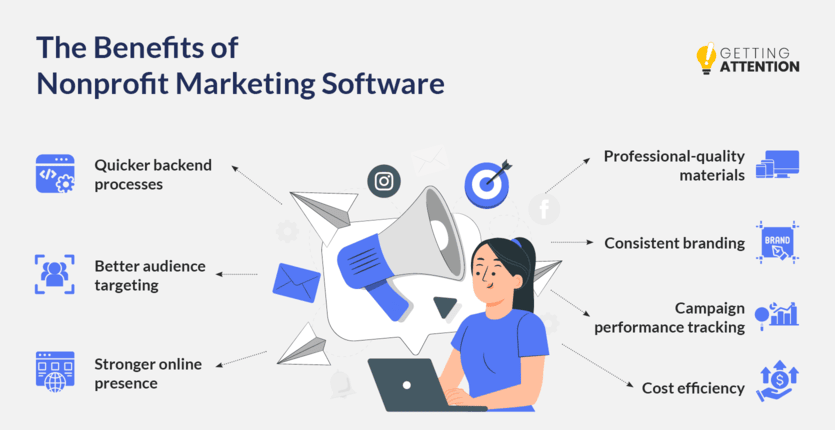
With all these benefits, marketing software can help you bring attention to your work and expand your impact.
What should we look for when buying nonprofit marketing software?
Every nonprofit has different goals and needs, so there’s no one-size-fits-all solution. Evaluate your marketing needs and ensure any software aligns with your mission and budget. Generally, keep an eye out for these components:
- Goal Alignment: Are you trying to reach new supporters or beneficiaries? Focus on software designed for external outreach, such as advertising platforms or social media management tools. Do you want to increase revenue through email marketing? Explore email marketing software with strong fundraising and donor engagement features.
- Automation Features: Look for software that automates repetitive tasks like email campaigns, social media scheduling, and data collection, saving time and allowing you to focus on strategic initiatives.
- Customization Options: Opt for software with flexibility to customize content, whether you’re creating emails, landing pages, or workflows. This ensures alignment with your branding and messaging for a cohesive and professional presentation.
- Audience Segmentation: Choose a platform that allows you to segment your audience based on demographics, donation history, volunteer activity, or engagement level. Targeted campaigns are more impactful and help strengthen relationships with your supporters.
- Data Security: Ensure your nonprofit marketing software complies with data protection regulations like GDPR, CCPA, or HIPAA, if applicable. Features like secure data storage and encryption protect your organization and stakeholders from breaches.
- Analytics and Reporting: Look for platforms with robust analytics that provide insights into marketing performance, audience engagement, and ROI. Real-time tracking and customizable reports help refine strategies.
- Trial Period or Demo Availability: Test software with a free trial or demo to evaluate its features and compatibility with your workflows before making a commitment.
- Positive User Reviews: Check trusted sources like G2 or Capterra for unbiased reviews. These reviews provide real-world insights into the software’s effectiveness and user satisfaction beyond vendor claims.
- Integration with Other Tools: Ensure compatibility with tools you already use, such as donor management systems, event management platforms, or payment gateways. Seamless integration reduces data silos.
By carefully evaluating these factors, you can select nonprofit marketing software that aligns with your needs and goals. The right platform will empower you to engage your audience more effectively, streamline processes, and amplify impact.
Google Ads: The Best Advertising Platform for Nonprofits
Google is the most popular search engine, claiming around 90% of all searches. For nonprofits, it’s especially powerful thanks to the Google for Nonprofits program. If approved, your organization gains free access to Google Workspace, specialized Google Maps features, the YouTube Nonprofit Program, and more.
The best perk is access to the Google Ad Grants application, which gives all eligible recipients $10,000 worth of monthly Google Ad credits. Your nonprofit can spend these credits on creating powerful ads that instantly appear at the top of Google Search results for relevant keywords. Here’s an example of an ad from the World Wildlife Fund: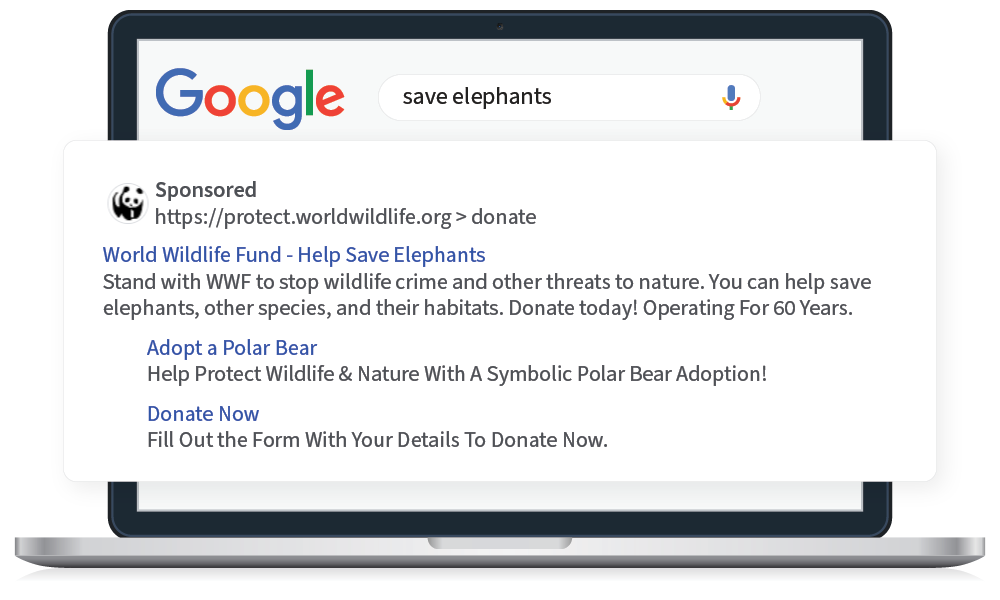
Ads like these enable nonprofits to connect with new supporters, drive traffic to their websites, and promote initiatives. The platform’s powerful targeting options let organizations tailor campaigns to specific demographics, locations, and interests. That means you can reach the right audience, whether you’re amplifying services to beneficiaries or promoting an event.
Additionally, Google Ads provides detailed performance analytics, allowing nonprofits to refine their campaigns for maximum impact. Its ability to connect you with millions of users while offering cost-effective solutions makes it a top choice for nonprofit advertising.
Check out this video that gives a concise overview of the program’s benefits:
Getting Started With This Digital Marketing Tool
To receive the Google Ad Grant, you need to register for Google for Nonprofits. Then, fill out the Google Ad Grants application. Google’s verification partner, Goodstack (formerly Percent), will confirm your nonprofit’s legitimacy, and the Ad Grants team will reach out to let you know whether you’re approved.
From here, create ads that promote your cause. Follow these steps:
- Decide what you want to achieve with your ads, like increasing website traffic, recruiting volunteers, raising awareness, or driving donations.
- Research keywords with tools like Google’s Keyword Planner to find search terms related to your cause. Focus on keywords related to your mission that receive traffic.
- Create compelling ad copy with clear headlines, strong descriptions that highlight your nonprofit’s impact, and a strong call to action such as “Donate Today.”
- Optimize your landing pages so they’re user-friendly, mobile-responsive, and relevant to your ads. Include testimonials, impact statistics, or compelling visuals to encourage engagement.
From here, monitor ad performance with Google Analytics alongside built-in tools in Google Ads Manager. These platforms work together to provide detailed insights into how ads are performing and how users interact with your website.
There’s a learning curve that comes with the program. To maintain your eligibility, you’ll also need to meet ongoing requirements, such as using high-quality keywords. That’s why many nonprofits partner with Google Ad Grant specialists like ours.
We’ll walk you through your application, define your goals for the grant, find valuable keywords, craft compelling ads, and ensure you comply with the program’s rules. That way, you can make the most of this nonprofit marketing software.
Not convinced this is the right move? Check out our Google Grant Impact Report to learn more about the benefits.
Nonprofit Email Marketing Platforms
Email keeps your nonprofit connected with supporters, amplifying the latest updates on your programs and events. Dedicated email marketing software streamlines your outreach, ensuring communications reach those who are most likely to engage.
Here are several of the best nonprofit marketing software with notable open rates:
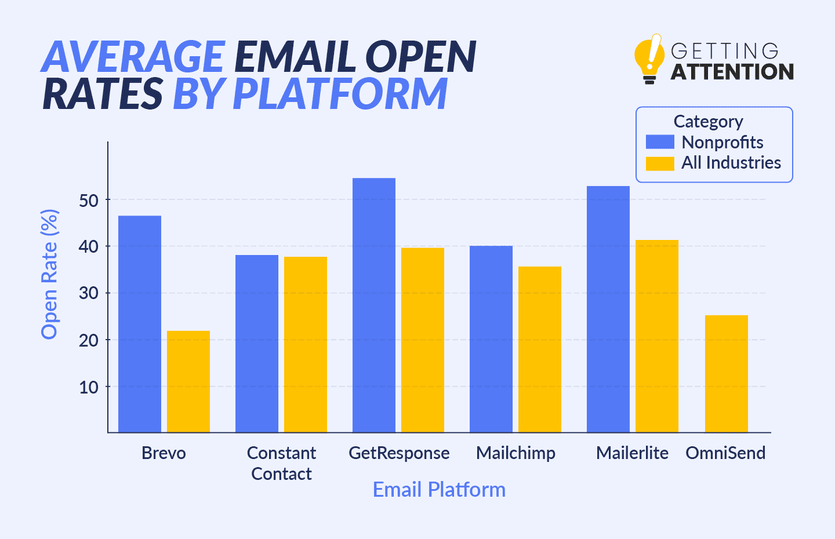
Brevo
Brevo boasts an average open rate of 46.49% for nonprofit emails. It’s a versatile email marketing and CRM platform designed for small to medium-sized organizations. It offers an array of tools for email marketing, automation, and audience segmentation, making it an excellent choice for nonprofits.
Key Features:
- Drag-and-drop email editor and ready-made templates
- AI-generated subject lines and predictive timing for individual recipients
- Email automation workflows for nurturing leads
- SMS marketing integration for multi-channel campaigns
- Real-time reports to track interactions
Constant Contact
This nonprofit email marketing platform experiences open rates of 39.58% for nonprofit services and 41.83% for nonprofit membership organizations. Constant Contact is a user-friendly platform designed for small businesses and nonprofits to enhance their email campaigns. It focuses on simplicity and includes tools for event promotion, list management, and basic automation.
Key Features:
- Hundreds of customizable email templates
- Drag-and-drop email editor for easy design
- Event management tools, including RSVP tracking
- Integrations with apps like Canva, Vimeo, Shopify, and Stripe
- Real-time analytics and reporting dashboards
GetResponse
GetResponse is an all-in-one marketing platform with strong email marketing, automation, and webinar hosting capabilities. It’s a good fit for nonprofits and businesses looking for integrated tools to support their campaigns. It also boasts an incredible 54.54% average email open rate for nonprofits.
Key Features:
- Signup forms, popups, and landing pages
- Newsletter and autoresponder
- Advanced segmentation to target different supporter groups
- Integrated webinar hosting for virtual events
- An autofunnel feature to create sales and donation funnels
Mailchimp
Mailchimp is one of the most popular email marketing platforms, known for its ease of use, robust integrations, and scalability. It’s particularly suitable for small and medium-sized organizations seeking a simple yet powerful tool. Plus, Mailchimp’s average nonprofit email open rate is 40.04%.
Key Features:
- Intuitive email builder with drag-and-drop functionality
- Pre-built marketing automation templates
- AI-powered audience insights and recommendations
- 300+ integrations with third-party apps and other nonprofit marketing software like Shopify and WordPress
MailerLite
MailerLite is an affordable, minimalist email marketing platform that provides essential tools for campaigns without unnecessary complexity. This nonprofit marketing software is ideal for nonprofits with tight budgets or basic marketing needs. In fact, it performs exceptionally well for nonprofits with a 53.21% average open rate.
Key Features:
- Drag-and-drop email editor with modern templates
- Custom HTML editor for advanced customizations
- A free image library
- Integration with eCommerce platforms like Shopify, WooCommerce, and Stripe
- Easy-to-use interface, perfect for beginners
- Competitive pricing, with a free plan for up to 1,000 subscribers
Omnisend
Omnisend is a powerful marketing platform tailored for e-commerce but equally effective for nonprofits looking to manage multi-channel campaigns. It excels in integrating email, SMS, and social media marketing. While OmniSend has a lower average open rate of 25.1% across all industries, many nonprofits still find its features useful.
Key Features:
- Multi-channel campaigns integrating email, SMS, and push notifications
- Pre-built workflows for abandoned cart recovery and post-purchase follow-ups, which can be adapted for nonprofits
- Split testing to determine which emails work the best
- Campaign Booster, which automatically resends your email campaigns that haven’t been opened or clicked
Top Nonprofit Website Builders
Your website is the foundation of your digital marketing strategy. You’ll drive traffic to it across all communications—Google Ads, emails, social media, and even offline channels. It’s one of supporters’ key resources to learn about your mission, so create a strong website with a reliable, secure, and user-friendly website builder like one of the following.
Squarespace
Squarespace is a versatile website builder with elegant templates, making it popular for nonprofits seeking a professional online presence. It offers intuitive drag-and-drop features that make website creation accessible even for those without coding skills. Squarespace provides integrated tools for blogging, email campaigns, and fundraising, enabling nonprofits to communicate their missions.
Key Features:
- Beautiful, customizable, and mobile-responsive templates
- Built-in donation buttons and fundraising tools
- Versatile forms for everything from volunteer signups to beneficiary intakes
- Branding tools like a logo maker
- Integrated email marketing capabilities
- A blogging platform for sharing updates and stories
WildApricot
WildApricot is a membership-focused website builder ideal for nonprofits that fundraise, have member directories, and host events. It’s an all-in-one platform that combines website building with CRM capabilities, allowing organizations to centralize operations.
Key Features:
- Drag-and-drop website editor with nonprofit-focused templates
- Optional advanced customizations using HTML and CSS
- Widgets to embed membership applications, event calendars, and more directly into your site
- Blogging tools and members-only pages for targeted communication
- Online donations and payment processing
Wix
Trusted by 250+ million users, Wix is a user-friendly website builder that caters to nonprofits seeking an affordable way to create a professional online presence. Its drag-and-drop interface allows users to customize their websites without coding. With built-in features like donation forms and event management, Wix is ideal for small to medium-sized nonprofits focused on quickly creating engaging, modern websites.
Key Features:
- Intuitive drag-and-drop website editor
- 900+ customizable templates with mobile optimization
- Integrated SEO and marketing tools
- AI tools for generating text, visuals, and fully designed sections on your site
- Built-in donation and fundraising tools
- Online stores, blogs, and other tools to build out your site
WordPress
WordPress is a highly customizable, open-source platform that powers over 40% of websites worldwide. It’s an excellent choice for nonprofits looking for flexibility, with thousands of themes and plugins available to tailor the site to their needs. While it requires more technical know-how than other platforms, it offers unparalleled functionality and control for organizations of all sizes.
Key Features:
- Extensive library of themes and plugins, including nonprofit-specific options
- Full control over website design and functionality
- Built-in blogging and content management system
- Ability to integrate donation forms, payment gateways, and CRM tools
- SEO-friendly framework to increase online visibility
Other Nonprofit Digital Marketing Tools
A well-rounded nonprofit marketing plan encompasses multiple channels. Let’s explore a variety of other nonprofit marketing software that you might not have considered.
Double the Donation Matching
Workplace giving generates an incredible $5 billion for charities every year. Matching gifts make up a big part of this, but a lot of revenue goes unclaimed for nonprofits since donors are often unaware of the opportunity. Double the Donation Matching can automatically identify and contact your match-eligible donors. You can also embed a convenient search tool where donors can manually check their eligibility for matching gifts from their employers.
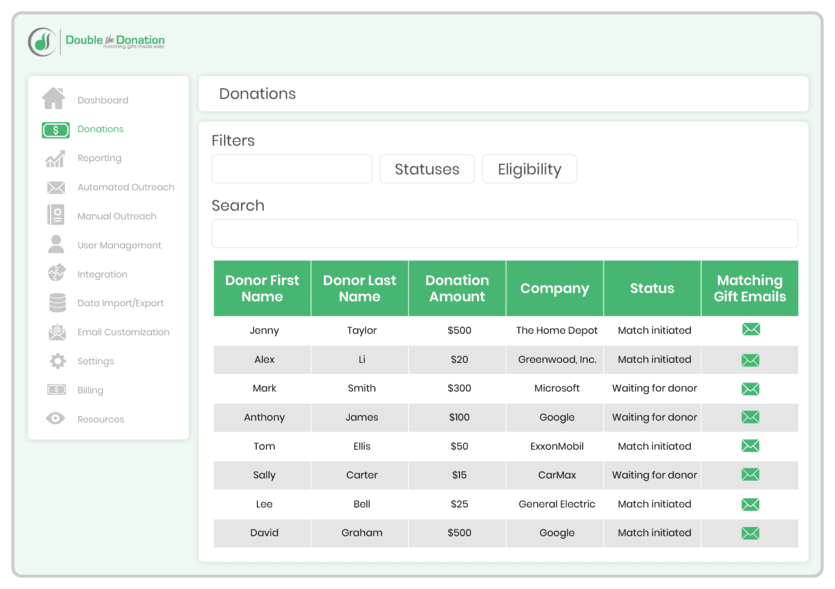
Key Features:
- Automated reminders to donors for matching gift submissions
- Matching gift search tool for donors to identify eligibility
- Integration with donation forms and CRM platforms
- Real-time tracking of matching gift progress
- Auto-submission, which allows the software to submit a match request on behalf of donors
eCardWidget
eCardWidget enables nonprofits to create and send digital greeting cards as part of their donor engagement and fundraising strategies. Using this nonprofit marketing software, design branded eCards for various occasions, providing supporters with a unique way to contribute while sharing your message. eCardWidget is an innovative way to combine creativity with donor outreach. Create thank-you cards, birthday cards, event invitations, or cause awareness eCards to boost peer referrals. You can even sell eCards to raise funds.
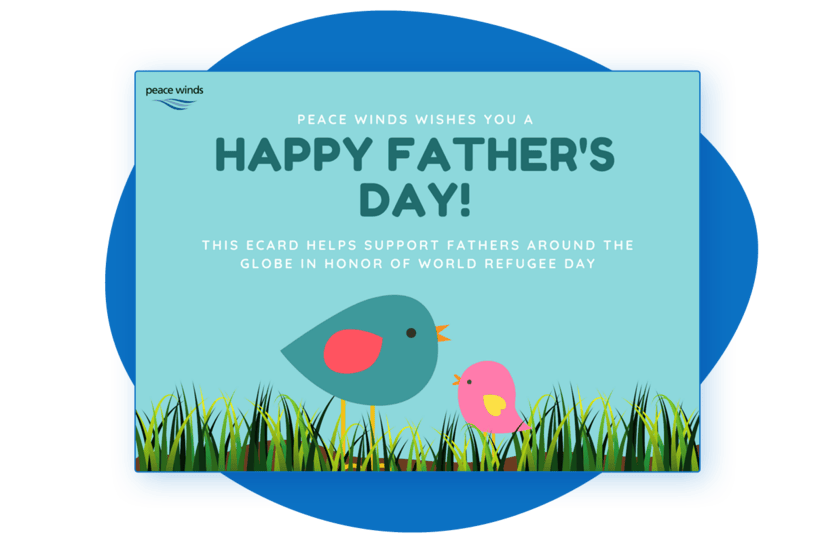
Key Features:
- Customizable eCard templates for branding and personalization
- Integration with donation forms to encourage contributions
- Scheduling tools for timed eCard delivery
- An embeddable widget that you can add to your site
- Analytics to track engagement with eCards
Tatango
Tatango is a text message marketing platform designed to help nonprofits engage supporters through SMS campaigns. It’s built for large-scale campaigns and offers advanced features like segmentation and automation to deliver personalized messages. Tatango is especially valuable for fundraising, event promotion, and driving immediate action.
Key Features:
- SMS and MMS campaign creation with personalized messaging
- Advanced audience segmentation
- Automation tools for recurring messages and campaigns
- Compliance with regulations like SOC-2 for safe messaging
- Integrations with popular nonprofit software like Salesforce and Classy
Start marketing your nonprofit.
The right nonprofit marketing software will empower your team to amplify your message and connect with supporters. If you’re unsure where to start, stick with foundational platforms like email and powerful opportunities like Google Ads.
Remember, Google Ads is a powerful platform for targeting your audience, and the Ad Grant allows you to tap into it for free. If you need help creating your campaigns, reach out to our Google Ad Grant experts to confirm your eligibility and craft compelling ads for your cause.
To continue refining your nonprofit marketing plan, check out these free resources:
- Powerful Nonprofit Advertising Examples To Inspire Your Ads. Explore effective advertisements from real nonprofits, and get inspiration for your Google Ads, social media ads, and more.
- Hiring A Google Grants Manager: A Guide & 9 Agencies. Learn how an agency that specializes in Google Ads can help you make the most of the Ad Grant. This resource also shares trustworthy agencies.
- YouTube for Nonprofits: How To Get Started & Tell Your Story. YouTube is a powerful video marketing platform, and you can tap into extra features through YouTube for Nonprofits. Learn how to leverage the program to tell your nonprofit’s story and connect with supporters.
